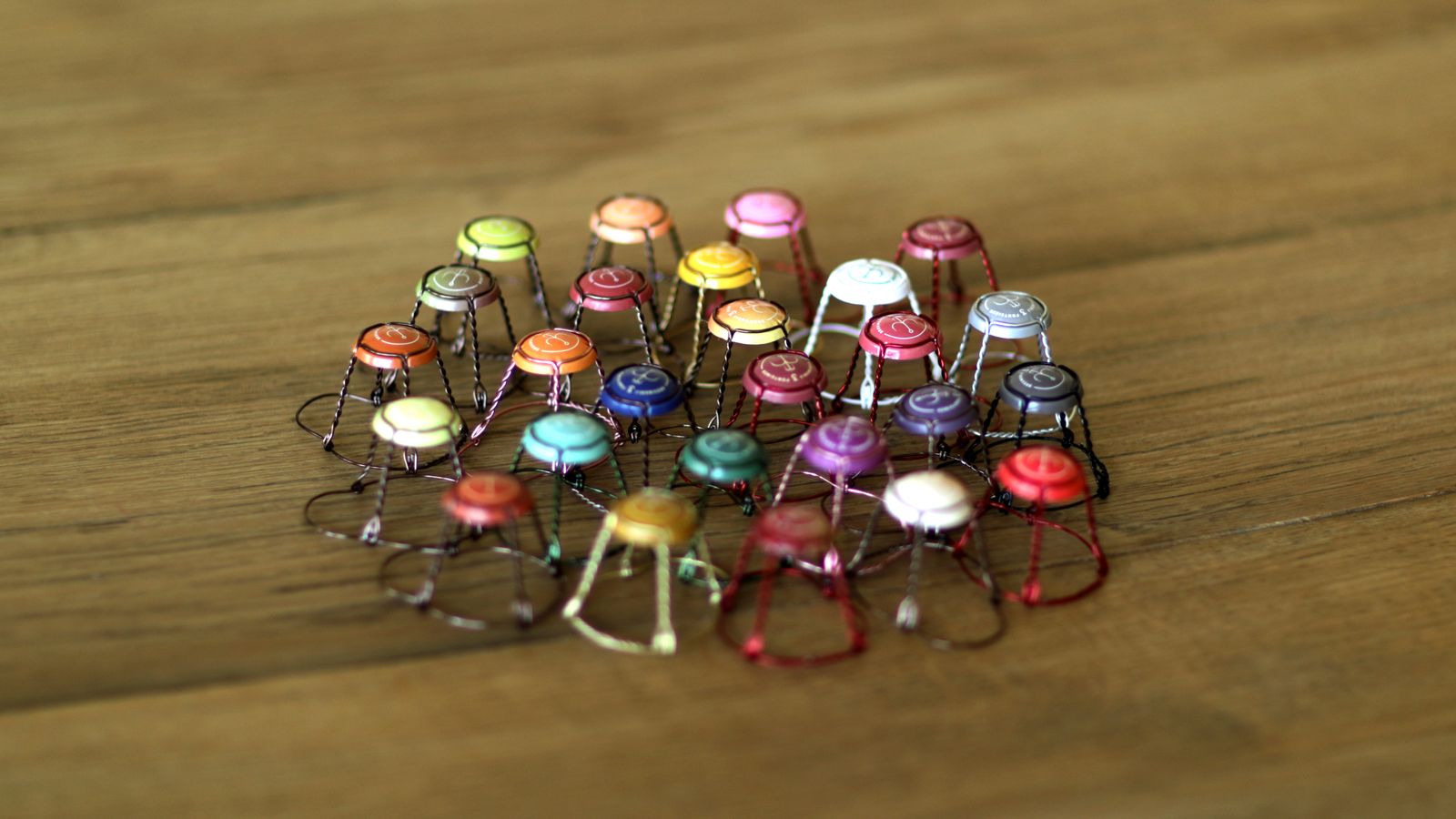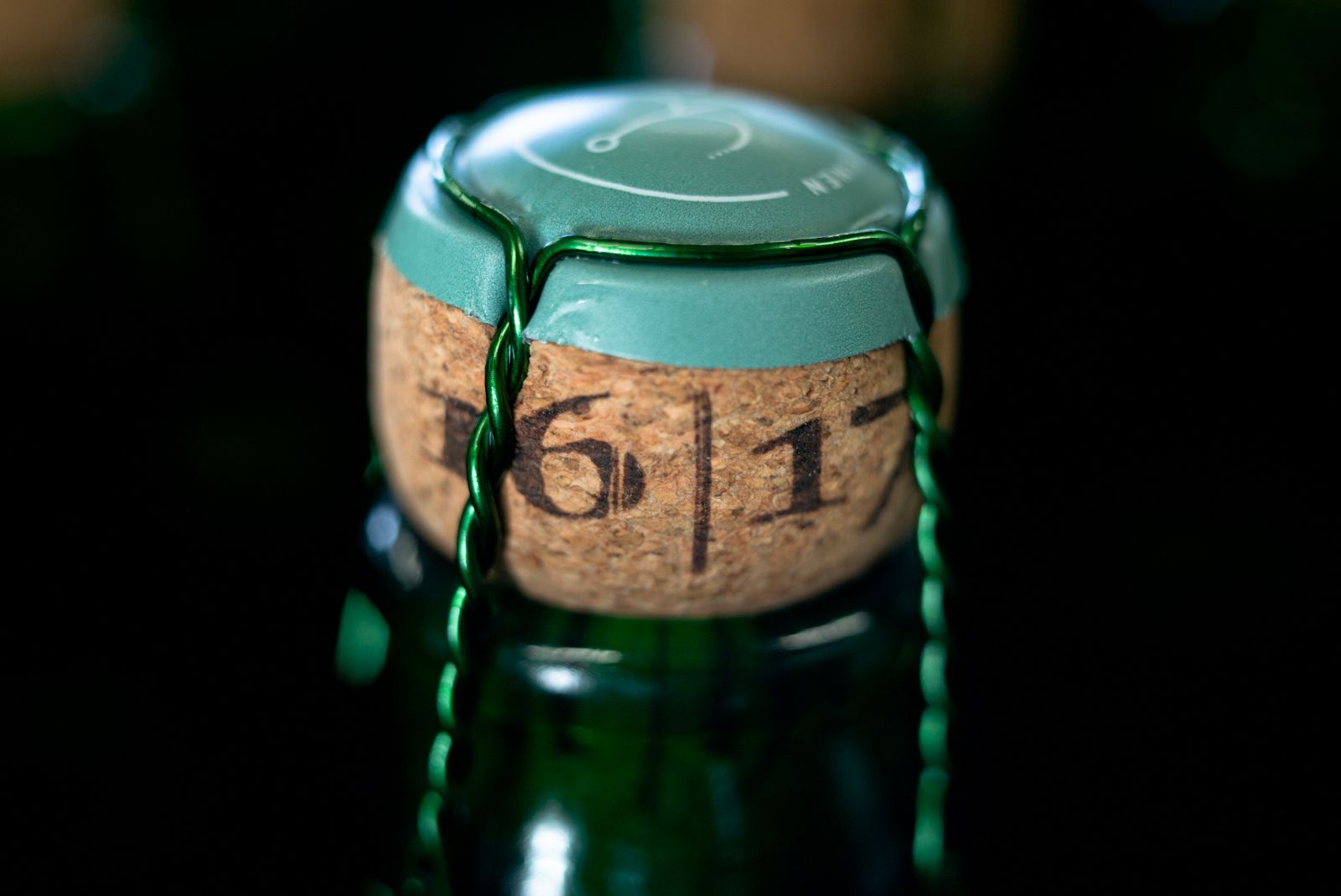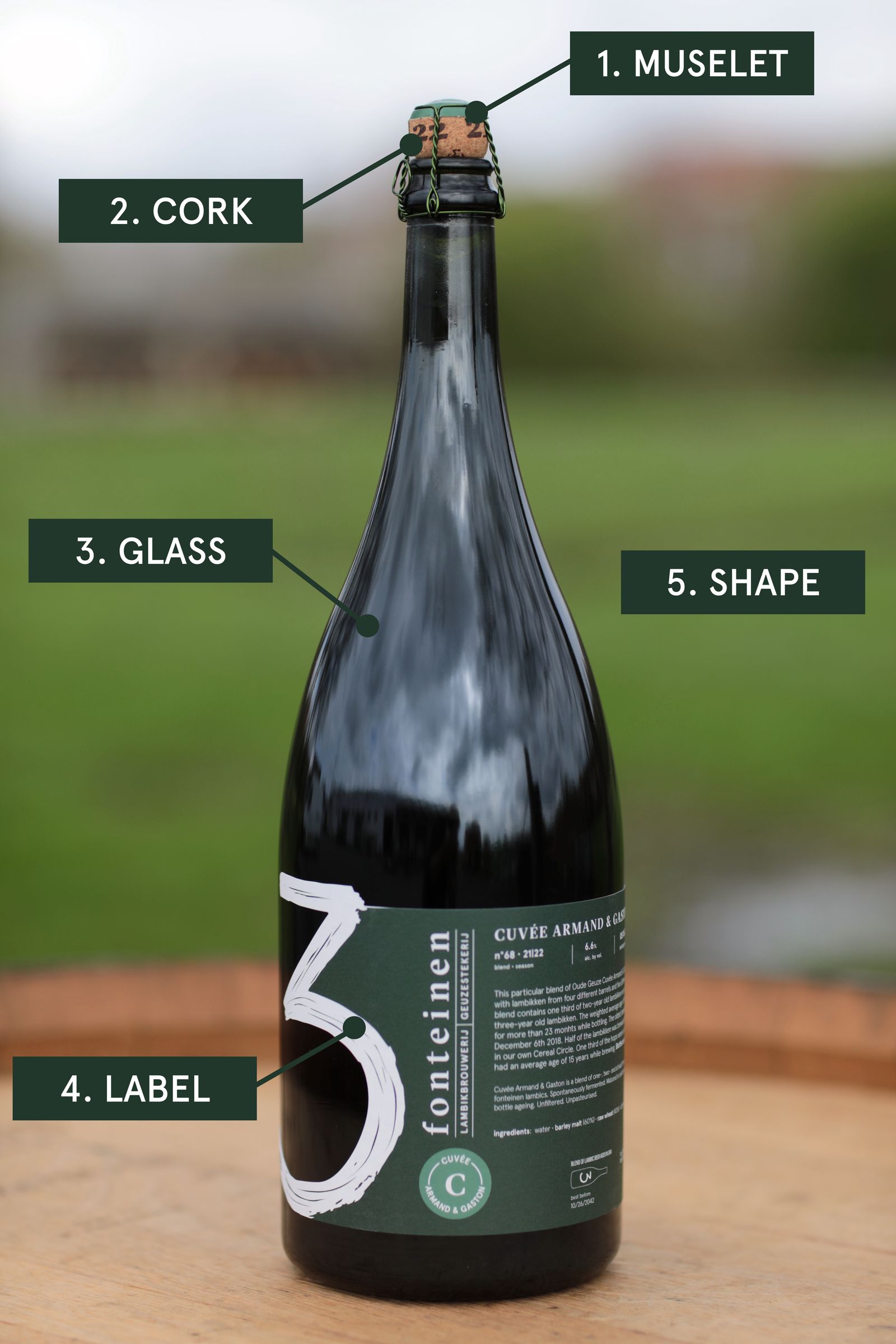Geuze from Brouwerij 3 Fonteinen will never be served from a keg, but always from a bottle. Does it matter what that bottle looks like? It sure does. The shape, the material, the colour and the finishing are crucial for storing and serving lambic beers in the best possible way.
Traditional lambic beers mature in wooden barrels, but that is not the end of their story. After bottling, the beer goes on to evolve in the bottle for months and years. All the while, while the bottle quietly lies down, fermentation continues. During this process, the pressure becomes too great to close it with an ordinary bottle cap or cork. Hence the thick cork with a muselet, like for a bottle of champagne.

1. The cage.
Each type of lambic beer in our range has its own muselet. We can play with the colour of the iron wire and especially of the metal cap (the flan). The design of the flan also returns on the pastille, which is the coloured circle on our label. We use shades of green for the Geuzes, shades of metal for special Cuvées, red for the Kriek, orange for the Peach... Including all the variants, we come to about thirty hues in total.

2. The cork.
Since 2010, we have been working with patented DIAM® corks, made from natural cork. There are no impurities left in them, so the chance of a 'bouchonné' (corked) lambic beer is virtually nil. We use corks that are two millimetres thicker than usual, so that even less oxygen can get through. A bottle of Geuze can easily be kept for more than twenty years—with this cork probably even longer. And preferably in peace, by the way, without the slightest movement. That is why, since the 16|17 season, we printed the brewing season twice on the side of the cork. This way, no one has to turn the bottle around in the cellar to search for the year.
3. The glass.
Traditionally, lambic beers are bottled in dark glass, usually green, as a protection against light. Too much light could discolour the beer and affect the taste. We use two kinds: dark olive brown (which best blocks the UV rays) for beers with 100% lambic from Brouwerij 3 Fonteinen, dark green for the others.
4. The label.
In the old days, bottles were not labelled, but marked. With a white, red or purple chalk line. That was it. Today, this is no longer possible, since every label has to include a minimum of information. To remain faithful to the simplicity of the chalk line, though, we kept the chalked number 3. Three times a 3, with a slightly different swish for the 37.5cl, 75cl and 150cl bottles—all drawn by Armand’s own hand.
5. The shape.
Most of the bottles we use are champagne-type bottles. The reason is simple: resistance to pressure. Because of the natural and spontaneous fermentation in the bottle, thick glass is not a luxury but a necessity. Only for a few still lambics (without carbonation), we exceptionally use Burgundy bottles with a regular wine cork. All our bottles have a punt at the bottom, which makes pouring with one hand easier—all according to the rules of the trade.
Pop. Cheers!
